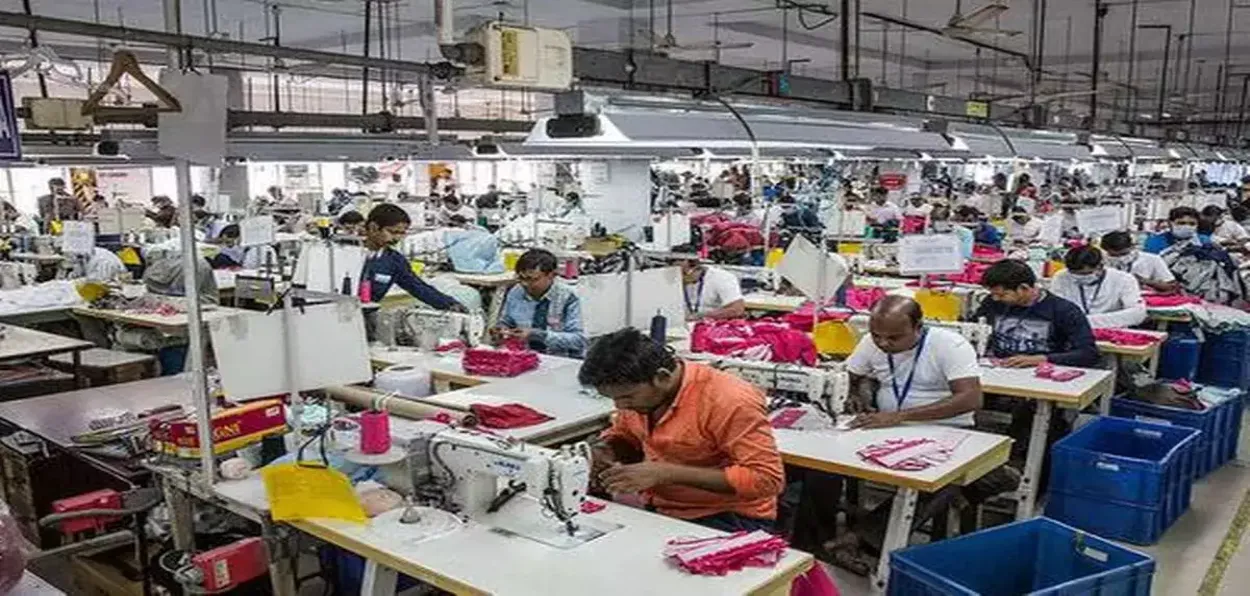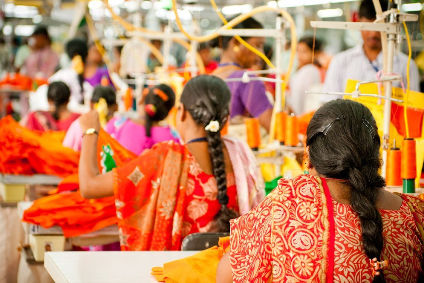
 Sushma Ramachandran
Sushma Ramachandran
One of India’s biggest industries has come back into the limelight recently. The vast textiles and apparel sector which is the second largest employer in the country is proposed to be expanded rapidly. Textiles Minister Giriraj Singh has just unveiled a roadmap to virtually double the size of the industry from the existing 164 billion dollars to 350 billion dollars by 2030. The plan envisages an investment of Rs. 70000 crore in the seven mega integrated textile and apparel parks that have already been approved to be set up. As many as 21 lakh jobs are expected to be generated by these parks.
Indian Economy
The focus on textiles is much needed, given the importance of this sector. It contributes 2.3 percent to the country’s gross domestic product (GDP) and accounts for 13 percent of industrial production as well as 12 percent of exports. India is the fourth-largest textiles and apparel exporter in the world and the second-largest producer of jute, cotton, and silk. It also accounts for an amazing 95 percent of the world’s hand-woven fabric. Despite its dominating role in the economy, the textiles sector is not highlighted nowadays owing to the avid curiosity about sunrise industries like information technology and artificial intelligence. Yet centuries ago, it was this industry that put India on the world map.
The difference now is that priority is increasingly being given to man-made fibres including in the new expansion plan. This was mentioned by the Textiles Minister while announcing the new roadmap. He said it was essential to produce more such fabrics including synthetic and viscose to achieve the target market size. In this context, he commented that over 350 global brands source their clothing from this country. But he assured that natural fibers will also be given their due needs.
The new policy comes in the backdrop of stagnation in textile and apparel exports in recent years. These had dipped slightly in 2023-24 compared to the previous year. The apparel sector also has stiff competition from countries like Vietnam, Bangladesh, and China which are now much bigger exporters than India. Some studies place the blame on reliance on imported raw materials along with excess red tape. In other words, Indian exports would have been competitive but bureaucratic procedures are holding them back.
The challenging geopolitical scenario has also had an impact on the export scenario. With nearly 27 percent of apparel exports destined for the European Union and U.S. markets, the attacks by Yemen-based Houthis on merchant shipping going through the Red Sea have affected shipments. Cargoes are moving through the longer and more expensive route via the Cape of Good Hope, making Indian goods more expensive in key markets. The latest flashpoint in the conflict between Iran and Israel could also create further hurdles in the way of efforts to increase exports.
 Workers in a apparel factory
Workers in a apparel factory
In addition, exporters now have to face rising tariffs in the EU. In this region, countries like Bangladesh have an edge as they benefit from the least developed country tag. This is an issue sought to be raised by the textile industry in the ongoing free trade agreement negotiations with the EU as well as with the U.K. The fact that textiles and apparel remain highly labour-intensive industries is an element that should be taken into account in the final agreement. This is in addition to the non-tariff barriers being imposed on environmental grounds by the EU.
The political crisis in Bangladesh has also had implications for the Indian apparel industry. It was initially expected that it might have a beneficial impact as supply disruptions could provide an opportunity for Indian manufacturers. This has not happened so far. On the other hand, it has affected the operations of units set up by textile manufacturers from this country in Bangladesh. These had been established to avail of the EU’s concessional duties for LDCs. Cotton yarn supplies to the neighbouring country are also reported to have slowed down.
Within the country, there are also growing concerns over the dumping of Chinese man-made fibers. This is despite tariffs being pushed as high as 24 percent on such imports. The new textiles roadmap will have to devise a way to protect indigenous industries from the impact of this development.
The outlook is not all bleak, according to financial services agency B and K Securities which expects a recovery in exports by next year though domestic demand may continue to be moderate for the time being. A study on the sector has forecast that over the medium to long term, India could see more substantial gains as global buyers diversify supply chains away from China and Bangladesh.
ALSO READ: Why is Northeast on edge over political violence in Bangladesh
Against this backdrop, it is clear that the plans for expansion of the textile and apparel sector are timely as the industry increasingly needs greater support to meet global competition. The handloom segment especially needs more attention as raw material costs are rising while demand is not going up sufficiently. The industry is also concerned over higher rates of Goods and Services Tax and this issue needs to be reviewed so that it does not affect the sector’s health in the long run. As for cutting red tape, it should be high on the policy agenda as the country is losing ground to others in export markets. The new policy which envisages higher investment and expansion of this critical sector must resolve these multifarious problems.
